Nothing beats the colors and fragrances of flowers. Seeing flowers alone can relieve stress as well as make you happy, especially when someone gifted them to you.
Imagine how you’d feel when your flowers naturally change their color. Is this possible?
Can flowers change colors?
Flowers can change colors for a lot of reasons. For example, cut flowers can change colors when a new pigment is added to the soil or water. Flowers can also change color according to the time of the day or the stage of their development.

Continue reading to learn more reasons flowers can change their colors, as well as get the list of seven flowers that can change their colors.
Table of Contents
Can Flowers Change Color?
Flowers do change colors, and they can be interesting to see.
If you spend time near flowers, you might see how they change their colors with time. For pale-colored flowers, you can add food coloring to the water, and their colors will change.
The beauty of flowers is in their color, so flowers that can change their colors are not just more beautiful, they give you an extra reason to view them in awe.
7 Flower Varieties That Change Color
Here are some flowers that can change their colors:
1. Hibiscus mutabilis

This beautiful flower is white in the morning and turns pink in the afternoon.
When you look at the flower from 9 a.m. to 11 a.m., you should see that it is white or pale. However, the pink color starts to appear from noon and should be very pronounced by 3 p.m.
A healthy hibiscus bush can produce over 100 flowers.
2. Tulips

Do not be too surprised when you see your tulips changing colors. Some have been genetically modified to change their colors as they grow.
As for others, their flowers produce colors according to the virus in the soil. Some gardeners and florists can alter the color of a tulip by infecting it with a specific virus.
3. Hydrangeas
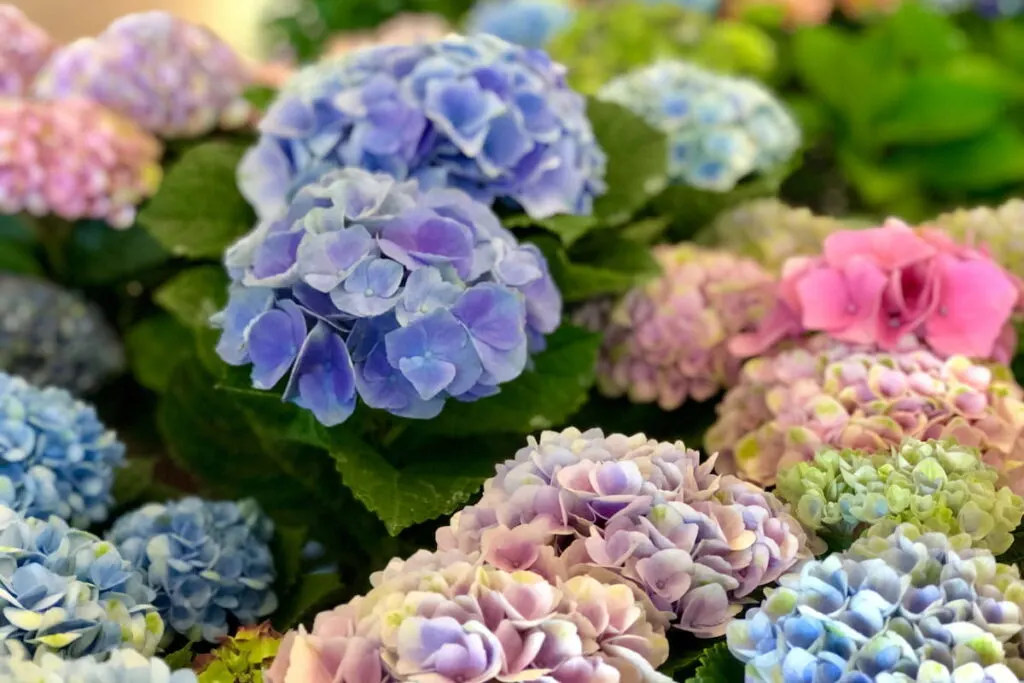
The beautiful ball-shaped flowers of the Hydrangea macrophylla plant can change their color according to the pH of the soil.
You can modify the soil pH to change the colors of hydrangea flowers. They appear pink in alkaline soil (i.e., when the pH is neutral or above 7) and blue when the soil pH is acidic.
4. Yesterday-Today-Tomorrow
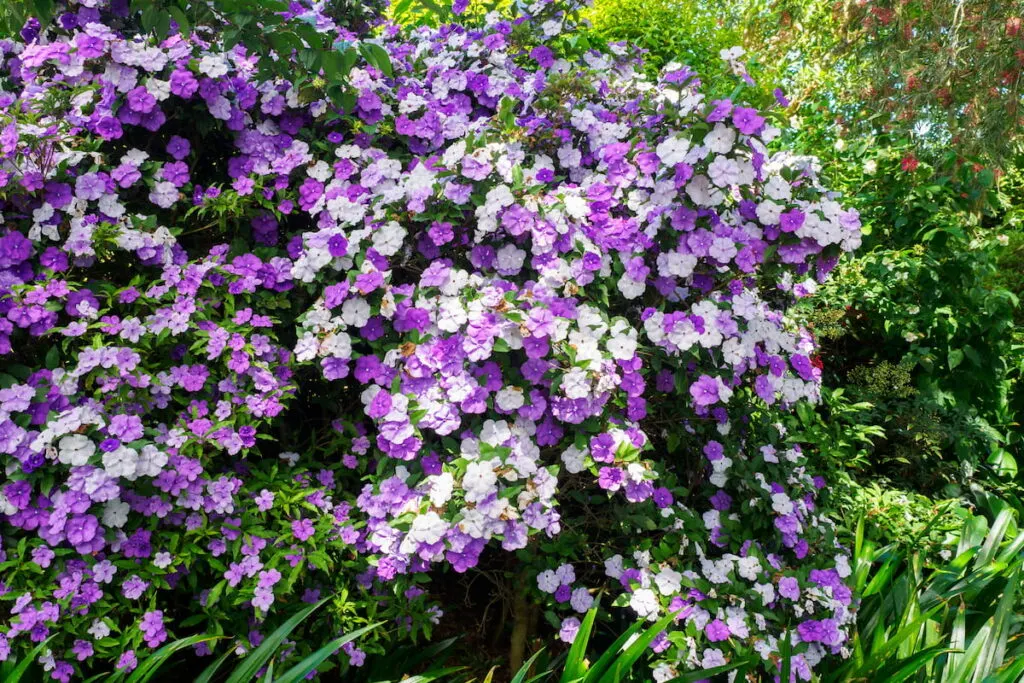
The behavior of this flower is as funny as its name.
The Brunfelsia latifolia flower behaves differently in three days: Yesterday, the flowers were violet. Today, the flowers are lavender (soft hue). However, the flowers will turn white tomorrow.
If you want your visitors to see different flowers when they visit you, you only need to grow this funny plant.
5. Latanas
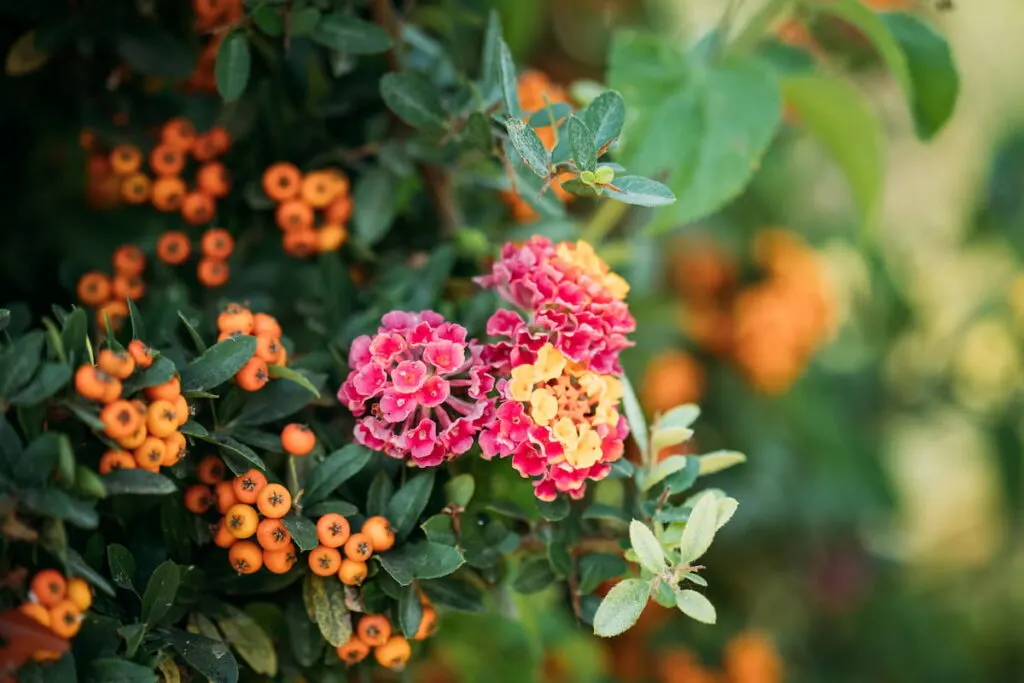
You can tell when this flower is pollinated through its colors. Before pollination, the color of the flower is red with a yellow center. However, the red becomes more intense, and the yellow becomes orange after pollination.
Latana camara is exceptionally beautiful before and after pollination.
6. Lungworts
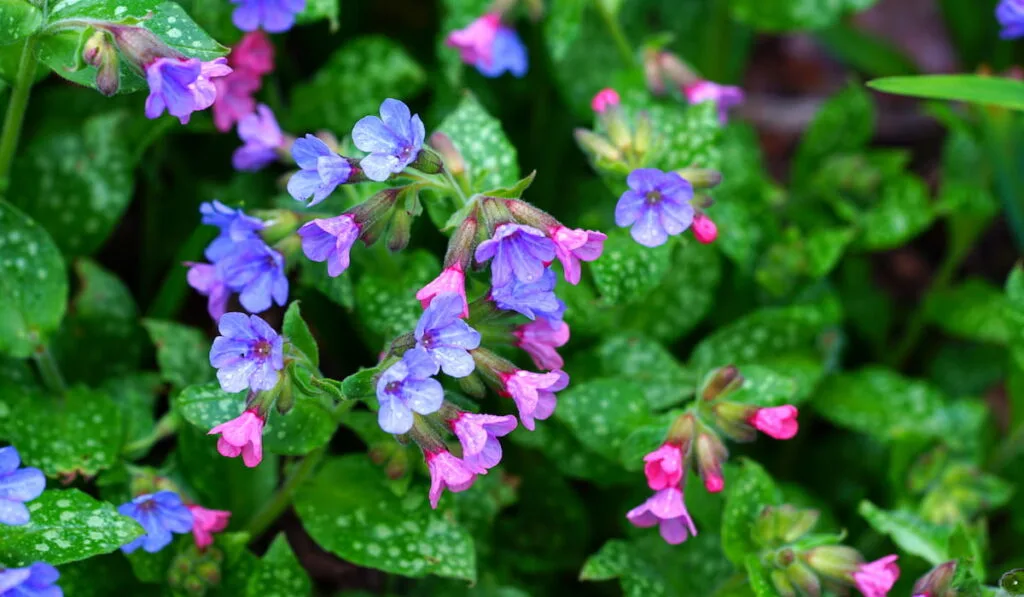
Plants in the Pulmonaria genus produce flowers that change colors according to the time of the day, just like the hibiscus species mentioned earlier.
In the morning, lungwort flowers are red. However, they turn blue as noon approaches. The beautiful flowers bloom for a week before they fall off.
7. Four O’Clocks
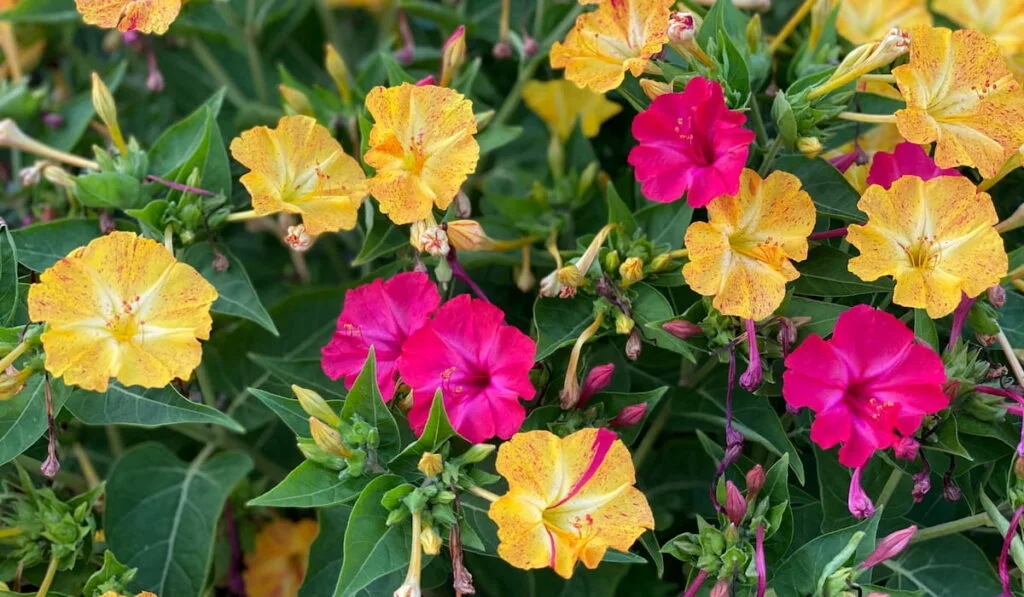
The Mirabilis jalapa plants are called four o’clocks for many reasons. The most common reason is that they do not bloom in the early hours of the day.
However, one intriguing feature of these plants is that their white flowers can turn purple, and the yellow flowers can turn pink. How cool is it to see four distinct colors in one plant?
Why do these seven flowers change their colors? Well, it depends on the specific flower because different flowers change their colors for different reasons.
Continue reading to learn why flowers change their colors.
Why Do Flowers Change Colors?
Here are some reasons why flowers can change their colors:
1. Environmental Factors
So many environmental factors, such as pH, temperature, and light, can affect the color of a flower.
Most flowers that change color are those that have different pigments in their petals.
Each pigment has a preferred environmental factor, so a rise or drop in pH and exposure to other environmental factors can change the color of the flower to match the dominant pigment.
The change of the soil pH and other environmental factors lead to an increase or decrease of anthocyanins, increase or decrease of carotenoids, or increase or decrease of betalains. These are pigments in flowers, just the way that chlorophyll is a pigment in leaves.
2. Time of the Day
Some flowers change their color according to the time of the day. The hibiscus flower is a good example of this point.
Some flowers can be white at night and in the morning and then produce pink or blue colors as noon approaches. There are so many reasons for this.
One major reason why time affects color is that as time passes, the exposure of the flower to temperature and light increases. This means that the environmental factors will help one pigment in the flower to grow while inhibiting the others.
Another reason for this is that the flower wants to attract insects that are only active during the daytime.
3. The Flowers’ Development
What if your flowers are not changing their colors and they are simply developing?
It could be that you first saw the flowers when they were not matured enough, and now that you are seeing them again, they have fully developed.
Flowers that have not developed fully can have a paler color.
Many roses fall into this category. You notice that they are either white or pale when you first see them; then, they will have a more intense color later.
Some flowers can continue growing after they are cut from the plant, so do not be too surprised when you see that your flowers’ color has changed after a few hours.
4. Coloring in the Soil or Water
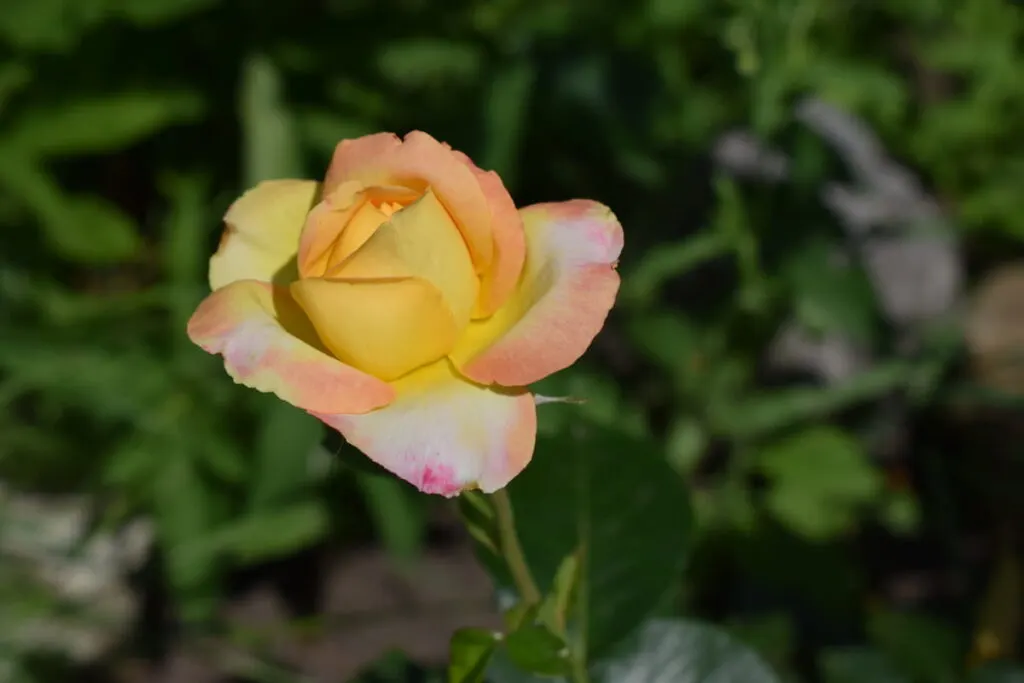
You must have heard of or even tried the carnation experiment.
This is whereby you can change the color of a carnation flower by adding food coloring or other plant-safe coloring substances into the water of the vase holding your cut flower. In no time, you should see the color of your flower changing and the flower becoming more beautiful.
This happens because flowers make use of water to remain firm. This means that so long as the flower continues to have access to water in a glass cup (or even in the soil), it will continue to collect water.
Also, osmosis can affect the coloring as it will passively transport itself to the flower petals.
5. Multiple Sexes
If you carefully observe a flowering plant, you may observe that the flowers did not change colors, but it is the plant that produced another type of flower.
Many apple and pear trees produce male and female flowers at different times of the day, so you should see different flowers (most likely with different colors) when you view the tree at different times of the day.
Well, aside from the differences in colors, there are so many ways to identify male and female flowers.
For example, some plants produce male flowers first before they produce female flowers. Some plants’ male flowers have more or fewer petals than female flowers.
To be sure of the difference, you need to research more on your specific plant.
6. Successful Pollination
Your flowers may be changing color because they have pollinated successfully. For example, the Latana camara flower changes color from yellow and white to pink or purple after pollination.
The color change is a great way to identify pollinated flowers and decide what to do with them. If you leave the flowers, the plant will stop producing flowers and will start producing fruits or seeds.
Some flowers can also express successful pollination in other ways.
For example, the flowers (i.e., their petals) will start to wither and fall off. Others might turn brown or pale. It really depends on how your plant behaves after pollination.
7. Different Varieties
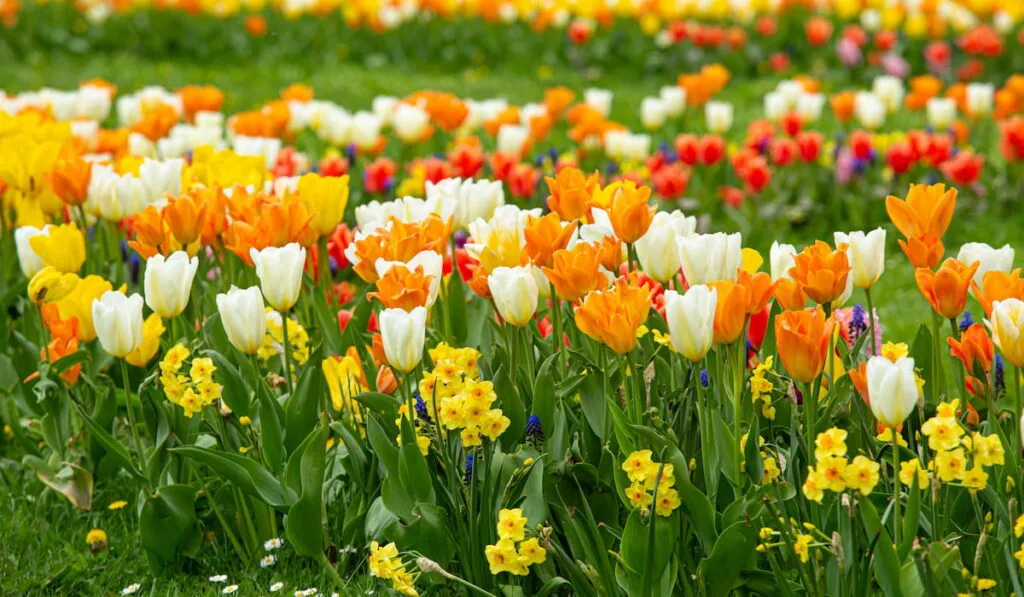
What if your flowers are not changing colors and you are only seeing different varieties of flowers?
This usually happens when people plant multiple seeds at once in the same place or pot.
While developing, some plants will produce their flowers before others. When the others bloom, you might think that the flowers have changed their colors; meanwhile, they are from different plants.
This is usually true because garden stores that make seed mixes (i.e., packs of seeds from different plants) usually mix the seeds of plants that are related and have the same or similar lifecycle and flowers.
8. Genetics and Biology
Some flower varieties, such as tulips, have been genetically modified to change their color as they age. Some have been infected with different viruses so that they can change their colors. Even though this is not natural, it is still worth mentioning.
9. Disease or Death

Remember that flowers can turn brown after pollination.
Aside from pollination, flowers can turn brown or pale when you do not grow the plant under the right environmental conditions. You want to make sure that your plants are healthy and have enough nutrients; else, they will lose their bloom.
Now that you know why your flowers are changing colors, you will no longer be surprised when you see them change color.
Conclusion
As you can see, there are so many reasons why flowers can change their colors, and you can even change their colors yourself.
If you want to beautify your garden with flowers that change colors, you can select any of the beautiful flowers from the list above for planting.
